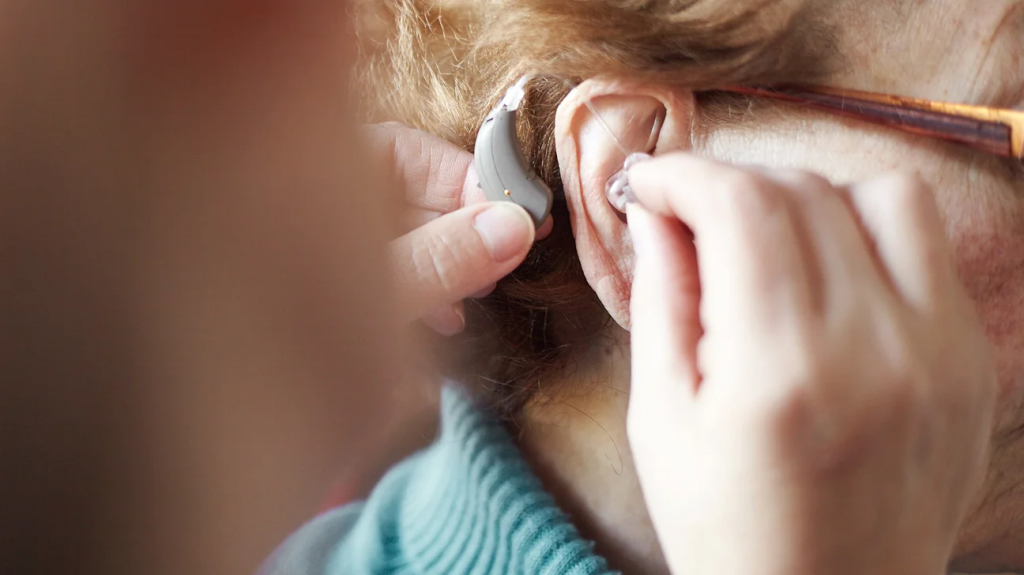Hearing Aids: Transforming Lives Through Innovation
 For millions of Americans living with hearing loss, hearing aids represent a transformative solution that can restore the joys of communication and connection. Over the years, these remarkable devices have undergone a remarkable evolution, driven by advances in technology and a growing awareness of the importance of hearing health. From their humble beginnings to the cutting-edge devices of today, let’s explore the journey of hearing aids and their impact on the lives of individuals across the United States.
For millions of Americans living with hearing loss, hearing aids represent a transformative solution that can restore the joys of communication and connection. Over the years, these remarkable devices have undergone a remarkable evolution, driven by advances in technology and a growing awareness of the importance of hearing health. From their humble beginnings to the cutting-edge devices of today, let’s explore the journey of hearing aids and their impact on the lives of individuals across the United States.
Early Beginnings: The Birth of Hearing Assistance
The history of hearing aids dates back centuries, with early attempts at amplifying sound dating as far back as the 17th century. These early devices, known as ear trumpets, were simple horn-shaped instruments designed to direct sound waves into the ear canal. While rudimentary by modern standards, ear trumpets represented a significant advancement in hearing assistance and remained in use well into the 19th century.
The 20th century saw rapid advancements in hearing aid technology, fueled by innovations such as vacuum tube amplification and carbon microphones. These early electronic hearing aids were bulky and cumbersome, but they represented a significant improvement over previous designs. However, it wasn’t until the invention of the transistor in the 1950s that hearing aids truly began to evolve into the compact, high-performance devices we know today.
Technological Revolution: The Rise of Digital Hearing Aids
The advent of digital technology in the late 20th century revolutionized the field of hearing aid design, paving the way for smaller, more powerful devices with advanced features and capabilities. Digital hearing aids utilize microprocessors to process sound signals, allowing for greater customization and control over amplification levels and noise reduction. These devices also feature sophisticated algorithms that can automatically adjust settings based on the wearer’s environment, ensuring optimal hearing performance in any situation.
In recent years, the development of wireless connectivity and smartphone integration has further enhanced the functionality of hearing aids, allowing users to stream audio directly from their mobile devices and connect to a wide range of accessories and peripherals. Additionally, advancements in battery technology have led to the development of rechargeable hearing aids, offering greater convenience and sustainability for users.
Accessibility and Availability: Meeting the Needs of All
Today, hearing aids are more accessible and affordable than ever before, thanks to advancements in manufacturing techniques and distribution channels. In the United States, hearing aids are available through a variety of channels, including audiologists, hearing aid dispensers, and online retailers. Additionally, many insurance plans now offer coverage for hearing aids, making them more affordable for individuals with hearing loss.
Furthermore, recent regulatory changes have sought to increase competition and lower prices in the hearing aid market. In 2017, the FDA approved a new category of over-the-counter (OTC) hearing aids, allowing consumers to purchase hearing aids without a prescription. This move has led to the development of a new generation of affordable, user-friendly devices that are accessible to a wider range of individuals.
Conclusion: Empowering Lives Through Sound
In conclusion, the evolution of hearing aids represents a triumph of innovation and ingenuity, transforming the lives of millions of Americans living with hearing loss. From the simple ear trumpets of centuries past to the advanced digital devices of today, hearing aids have come a long way in terms of design, functionality, and accessibility. As technology continues to advance and awareness of hearing health grows, the future of hearing aids looks brighter than ever, promising a world where everyone can enjoy the gift of sound.

You must be logged in to post a comment Login